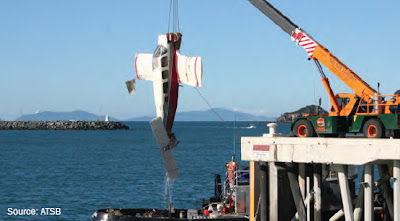There's really no excuse that I can think of for running out of fuel other than either willful stupidity or the passive kind. My flying buddy was surprised the other day when he pulled his flying club's Arrow out of the hangar and discovered a right fuel tank run almost completely dry. How do you miss that? Wouldn't you at some point wonder why you were rolling in so much control out put to keep the heavy wing from dropping.
True, whoever ran it dry had another tank to count on once the big fan in the front stopped turning, but the event is an example of fuel mismanagement or, more accurately, no management at all.
The Australian Transport Safety Bureau today issued "Starved and Exhausted," a report on the number of fuel starvation incidents in that country, which obviously has plenty of application here. Stupidity knows no boundaries. (Here's the pdf of the report)
The report documents several common problems by citing several individual cases. Coincidentally, this one rings a bell:
These occurrences are sometimes referred to as ‘finger-troubles’, on the basis that a pilot did not ‘use his/her fingers’ to select the tank with more fuel remaining. It is probably more helpful to look at why the pilot did not make that selection in the first place.
The simpler an aircraft’s fuel system, the easier it is to avoid selecting the wrong tank. A Cessna 150, with a separate fuel tank in each wing, has a very simple fuel selection, either ‘off’ or ‘on’. Although the Cessna 172 and 182 have a similar fuel system, the fuel selector has four selections; ‘off’, ‘both’ wing tanks at the same time, or either wing tank. In contrast, the Piper single engine training fleet all have separate wing tanks, but only one tank can be selected at any one time.
Once a selection of tanks is available, there is a greater chance of selecting the empty one, and the greater the number of tanks, the greater the chance of a mistake. The risks are increased when pilots forget to change tanks during the cruise when workload is lower, or when pilots forget to select the appropriate tank prior to the approach to land. Although tank selection for approach and landing is often specified in the aircraft flight manual, following this procedure will only be successful if the pilot has also ensured that there is sufficient fuel in the required tank for landing.
These risks are best managed by the strict application of a standard procedure, fuel logs and checklists. If a pilot is disciplined in always writing down a tank change with the time of the change, then any doubt about whether a tank was changed can be checked against the fuel log. If a tank change had been forgotten, then there will be enough information available to work out how to rebalance the fuel quantities. The use of a fuel log is discussed in the next case study.

No comments:
Post a Comment